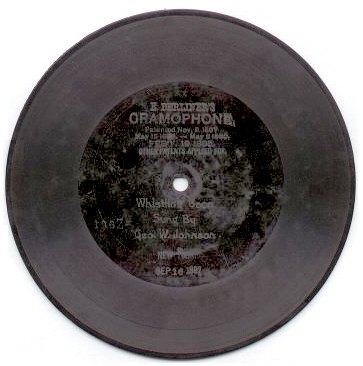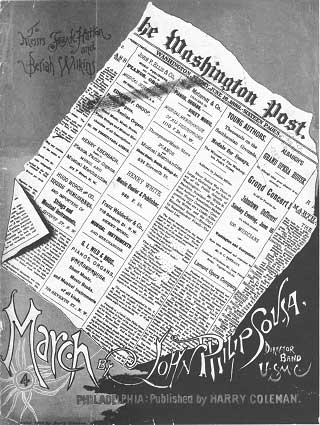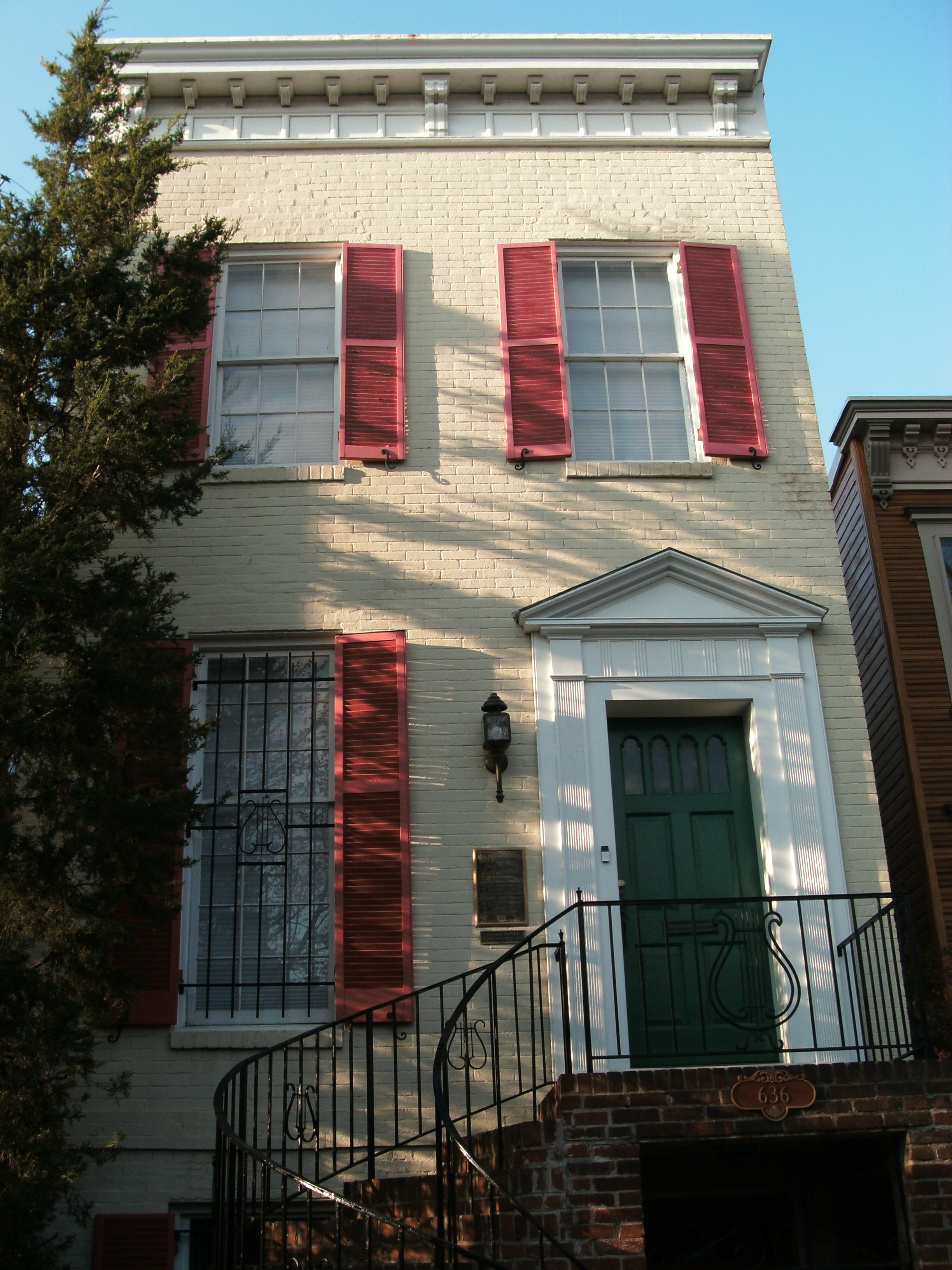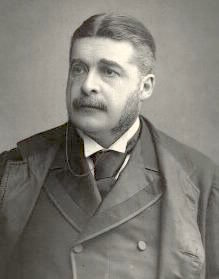|
1889 In Music
Events in the year 1889 in music. Specific locations * 1889 in Norwegian music Events *January 4 – Anton Seidl conducts Das Rheingold at the Metropolitan Opera, commencing the first performance of the Ring Cycle in the United States. *February 17 – César Franck's Symphony in D minor is premièred at the Paris Conservatory under the direction of Jules Garcin. *May 28 – The first ever pre-recorded wax cylinders of songs, instrumental music, and humorous monologues were introduced by Edison Records. *November 20 – Gustav Mahler premieres his Symphony No. 1 in Budapest at the Vigadó Concert Hall, at this time described as a "Symphonic-Poem in 2 Parts"; it is not favourably received in this form. *Emile Berliner markets the first commercial gramophone records. *Joseph Kekuku is credited with inventing the Hawaiian steel guitar. Published popular music * "Ask A Policeman" w. E. W. Rogers m. A. E. Duran Deau * "Down Went McGinty" w.m. Joseph Flynn * "Four Little Curly Head ... [...More Info...] [...Related Items...] OR: [Wikipedia] [Google] [Baidu] |
1889 In Norwegian Music
The following is a list of notable events and releases of the year 1889 in Norwegian music. Events Deaths ; January * 10 – Martin Andreas Udbye, composer and organist (born 1820). Births ; May * 25 – Sverre Jordan, composer, orchestra conductor, and pianist (died 1972). See also * 1889 in Norway * Music of Norway References {{DEFAULTSORT:1889 In Norwegian Music Music of Norway Norwegian Music Music is generally defined as the art of arranging sound to create some combination of form, harmony, melody, rhythm or otherwise expressive content. Exact definitions of music vary considerably around the world, though it is an aspect ... 1880s in Norwegian music ... [...More Info...] [...Related Items...] OR: [Wikipedia] [Google] [Baidu] |
Emile Berliner
Emile Berliner (May 20, 1851 – August 3, 1929) originally Emil Berliner, was a German-American inventor. He is best known for inventing the lateral-cut flat disc record (called a "gramophone record" in British and American English) used with a gramophone. He founded the United States Gramophone Company in 1894;Library of Congress"Emile Berliner and the Birth of the Recording Industry: The Gramophone" Retrieved 2017-01-19. The Gramophone Company in London, England, in 1897; Deutsche Grammophon in Hanover, Germany, in 1898; and Berliner Gram-o-phone Company of Canada in Montreal in 1899 (chartered in 1904). Berliner also invented what was probably the first radial aircraft engine (1908), a helicopter (1919), and acoustical tiles (1920s). Early life Berliner was born in Hanover, Germany, in 1851 into a Jewish merchant family. Though Jewish, his religious persuasion would develop into agnosticism. He completed an apprenticeship to become a merchant, as was family tradition. Whi ... [...More Info...] [...Related Items...] OR: [Wikipedia] [Google] [Baidu] |
The Washington Post (march)
"The Washington Post" (often called "The Washington Post March") is a March (music), march composed by John Philip Sousa in 1889. Since then, it has remained as one of his most popular marches throughout the United States and many other countries. History In 1888, the recent purchasers of ''The Washington Post'' newspaper—Frank Hatton (U.S. politician), Frank Hatton, a former Postmaster General, and Beriah Wilkins, a former Democratic congressman from Ohio—requested that Sousa, the leader of the United States Marine Band, compose a march for the newspaper's essay contest awards ceremony, in conjunction with a campaign to promote the newspaper under new ownership. Sousa obliged; "The Washington Post" was introduced at a ceremony on June 15, 1889, "with President Benjamin Harrison in attendance" before "a huge crowd on the grounds of the Smithsonian Museum." It quickly became quite popular in both the United States and Europe as the standard musical accompaniment to the Two ... [...More Info...] [...Related Items...] OR: [Wikipedia] [Google] [Baidu] |
John Philip Sousa
John Philip Sousa ( ; November 6, 1854 – March 6, 1932) was an American composer and conductor of the late Romantic era known primarily for American military marches. He is known as "The March King" or the "American March King", to distinguish him from his British counterpart Kenneth J. Alford. Among his best-known marches are "The Stars and Stripes Forever" (National March of the United States of America), "Semper Fidelis" (official march of the United States Marine Corps), " The Liberty Bell", "The Thunderer", and "The Washington Post". Sousa began his career playing violin and studying music theory and composition under John Esputa and George Felix Benkert. His father enlisted him in the United States Marine Band as an apprentice in 1868. He left the band in 1875, and over the next five years, he performed as a violinist and learned to conduct. In 1880 he rejoined the Marine Band, and he served there for 12 years as director, after which he was hired to conduct a ban ... [...More Info...] [...Related Items...] OR: [Wikipedia] [Google] [Baidu] |
The Thunderer
"The Thunderer" is a march composed by John Philip Sousa in 1889. The origin of the name is not officially known, though it is speculated that it gets its name from the "pyrotechnic ffectsof the drum and bugle in hescore." It is also one of Sousa's most famous and is one of the more difficult compositions to perform. Composition The piece is in much the same manner as most of Sousa's music; however, it is one of his first "distinctly American-sounding marches." The march follows the standard form (IAABBCDCDC) that is used in many of his other works. As is common, his themes are contrasting. During the repeat of the B section, Sousa introduces new countermelodic ideas. The trio is songlike. There is a ritardando leading into the repeat of the final theme, segueing to the piece's conclusion. See also * List of marches by John Philip Sousa John Philip Sousa was an American composer and conductor of the late Romantic era known primarily for American military marches. He ... [...More Info...] [...Related Items...] OR: [Wikipedia] [Google] [Baidu] |
Arthur Sullivan
Sir Arthur Seymour Sullivan (13 May 1842 – 22 November 1900) was an English composer. He is best known for 14 comic opera, operatic Gilbert and Sullivan, collaborations with the dramatist W. S. Gilbert, including ''H.M.S. Pinafore'', ''The Pirates of Penzance'' and ''The Mikado''. His works include 24 operas, 11 major orchestral works, ten choral works and oratorios, two ballets, incidental music to several plays, and numerous church pieces, songs, and piano and chamber pieces. His hymns and songs include "Onward, Christian Soldiers" and "The Lost Chord". The son of a military bandmaster, Sullivan composed his first anthem at the age of eight and was later a soloist in the boys' choir of the Chapel Royal. In 1856, at 14, he was awarded the first Mendelssohn Scholarship by the Royal Academy of Music, which allowed him to study at the academy and then at the Felix Mendelssohn College of Music and Theatre, Leipzig Conservatoire in Germany. His graduation piece, inc ... [...More Info...] [...Related Items...] OR: [Wikipedia] [Google] [Baidu] |
Take A Pair Of Sparkling Eyes
A take is a single continuous recorded performance. The term is used in film and music to denote and track the stages of production. Film In cinematography, a take refers to each filmed "version" of a particular shot or "setup". Takes of each shot are generally numbered starting with "take one" and the number of each successive take is increased (with the director calling for "take two" or "take eighteen") until the filming of the shot is completed. Film takes are often designated with the aid of a clapperboard. It is also referred to as the slate. The number of each take is written or attached to the clapperboard, which is filmed briefly prior to or at the beginning of the actual take. Only those takes which are vetted by the continuity person and/or script supervisor are printed and are sent to the film editor. Single-takes A single-take or one-take occurs when the entire scene is shot satisfactorily the first time, whether by necessity (as with certain expensive special ... [...More Info...] [...Related Items...] OR: [Wikipedia] [Google] [Baidu] |
Harry Dacre
Harry Dacre was the pen-name of Frank Dean (September 1857–16 July 1922), a British songwriter best known for his composition "Daisy Bell (Bicycle Built For Two)". Biography Dean was born on the Isle of Man, where he was baptised on 6 September 1857. He moved to Manchester, and then to Preston, Lancashire around 1882. He decided to make a career in songwriting, and used the pseudonyms Harry Dacre and Henry Decker (which some sources state was his birth name). He later claimed to have sold some 600 songs in the first two years of his career, but his first popular success was with the song "The Ghost of Benjamin Binns", which was first sung by Harry Randall in Brighton in 1885. Claiming that the stress of constant songwriting was affecting his health, he emigrated to Australia, where he stayed for four years before returning to England and then leaving for America in 1891. He took with him an early version of the song "Daisy Bell", and a bicycle on which he had to pay import ... [...More Info...] [...Related Items...] OR: [Wikipedia] [Google] [Baidu] |
Reginald De Koven
Henry Louis Reginald De Koven (April 3, 1859January 16, 1920) was an American music critic and prolific composer, particularly of comic operas. Biography De Koven was born in Middletown, Connecticut, and moved to Europe in 1870, where he received the majority of his education. He graduated B.A. from St John's College, Oxford in England in 1880. He undertook piano studies at Stuttgart Conservatory with Wilhelm Speidel, Sigmund Lebert, and Dionys Pruckner. He studied composition at Frankfurt with Johann Christian Hauff, and after staying there for six months moved on to Florence, Italy, where he studied singing with Luigi Vanuccini. Study in operatic composition followed, first with Richard Genée in Vienna and then with Léo Delibes in Paris. De Koven returned to the U.S. in 1882 to live in Chicago, Illinois, and later lived in New York City. He was able to find scope for his wide musical knowledge as a critic with Chicago's ''Evening Post'', ''Harper's Weekly'' and ''New York W ... [...More Info...] [...Related Items...] OR: [Wikipedia] [Google] [Baidu] |
Oh Promise Me
Oh Promise Me is a song with music by Reginald De Koven and lyrics by Clement Scott. The song was written in 1887 and first published in 1889 by G. Schirmer, Inc. as an art song. De Koven may have based the melody partly on a song composed by Stanislao Gastaldon, "Musica Proibita". In 1890, De Koven wrote his most successful comic opera, ''Robin Hood (comic opera), Robin Hood''. After opening night, the contralto playing Alan-a-Dale, Jessie Bartlett Davis, demanded a song to better show off her voice, threatening to walk out of the production. De Koven inserted "Oh Promise Me" into the score for her.Raph, Theodore"The American song treasury: 100 favorites" Courier Dover Publications, 1986, p. 222 The sheet music sold over a million copies in 1890 and continued to gain popularity for several decades, being performed by many artists. The song remains popular as a wedding song both in America and in the UK. Lyrics Oh, promise me that someday you and I Will take our love toget ... [...More Info...] [...Related Items...] OR: [Wikipedia] [Google] [Baidu] |
Little Annie Rooney
''Little Annie Rooney'' is a comic strip about a young orphaned girl who traveled about with her dog, Zero. King Features Syndicate launched the strip on January 10, 1927, not long after it was apparent that the Chicago Tribune Syndicate had scored a huge hit with ''Little Orphan Annie''. The name comes from the 1889 popular song of the same name, still familiar to many at the time. Although the King Features strip was an obvious knock-off with several similar parallels, the approach was quite different, and ''Little Annie Rooney'' had a successful run from January 10, 1927, to April 16, 1966. Publication history The strip's creators over the years included Ed Verdier (1927–29), Ben Batsford (1929-30), Sunday strips by Nicholas Afonsky (1934–43), writer Brandon Walsh (1930–54) and Darrell McClure (1930–66). McClure's assistants were Bob Dunn and Fran Matera. Daily * Ed Verdier (story and art): Jan 10, 1927 - July 20, 1929 * Ben Batsford (story and art): July 22, 1929 ... [...More Info...] [...Related Items...] OR: [Wikipedia] [Google] [Baidu] |
Down Went McGinty
"Down Went McGinty" (sometimes referred to as "Down Went Dan McGinty" at The Traditional Ballad Index Version 4.5, compiled by Robert B. Waltz and David G. Engle; at California State University, Fresno; retrieved April 26, 2019 and "Down Went M'Ginty")Sheet Music Holdings at the Rutherford B. Hayes Presidential Library; retrieved April 26, 2019 is an 1889 song written by Joseph Flynn. “Trying to Raise McGinty from the Bottom of the Sea” at ''Harper's Weekl ... [...More Info...] [...Related Items...] OR: [Wikipedia] [Google] [Baidu] |





